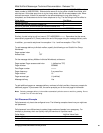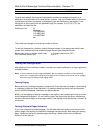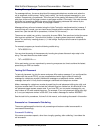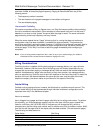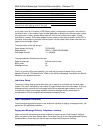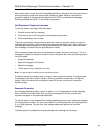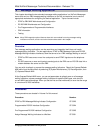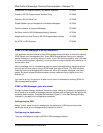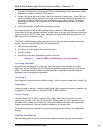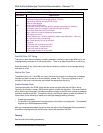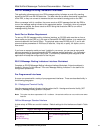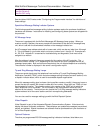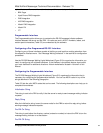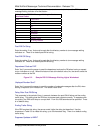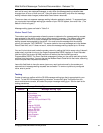
Mitel NuPoint Messenger Technical Documentation - Release 7.0
1. Determine what DTMF strings the PBX uses to turn message waiting indicators on and off,
and use this information to complete the DTMF-to-PBX Message Lights Worksheet. A blank
worksheet is located in Volume 2 of this Manual.
2. Create a line group with one or more lines to be used as an outdialer port. If your PBX only
allows a message waiting indicator to be turned off by the same extension that turned it on,
you can still configure a multi-line group if needed for heavy traffic volumes. The NuPoint
Messenger server uses the correct port to turn off message waiting indicators for specific
extensions.
3. Enter the information at the server maintenance console.
All configuring of the DTMF-to-PBX message waiting indicators is PBX-dependent. If your PBX
allows users to turn the message indicators of other users on and off, then the proper coding can
usually be found in the PBX users' guide. Otherwise, consult the PBX operating manual or your
PBX vendor for the necessary codes.
The DTMF-to-PBX Message Lights application menu prompts for specific sections of the dial
strings. The dial strings are dialed out in the following order:
1. PBX special access code
2. Pre-DN on or off string (after dial tone confirmation)
3. Directory number
4. Post-DN on or off string (followed by a wait for dial tone)
Figure 5-1 Sample DTMF-to-PBX Message Lights Worksheet
Line Group Information
All server ports are assigned to line groups. Each line group is then assigned to a single
application, and any configuring that is done for that application applies to every port in the line
group. The number of ports in each line group depends on how heavy the phone traffic is
expected to be for that particular application.
Line Group #
Each line group is represented by a distinct number. Valid line group numbers are 1 through 24.
Group Name
The group name is optional. It serves to easily identify the line group's purpose; for example, the
line group for this application can be called "DTMF-to-PBX Outdialer."
Line(s) in Group
You identify each line (or port) in a group using a triplet, which stand for a module, the slot
number for a line card, and a port on the line card. Module refers to a CPU, the server's main
processor. Slot numbers are 0 through 15. Ports are numbered 0 through
n
(the highest port
number on the line card); you can connect one telephone line to each port.
For more information on triplets and line group numbering, see the NuPoint Voice Application
chapter.
Initial Dial Tone Detection
When building outdial strings, the Initial Dialtone Detect parameter gives you precise control.
©
Copyright 2002, Mitel Networks Corporation 68



